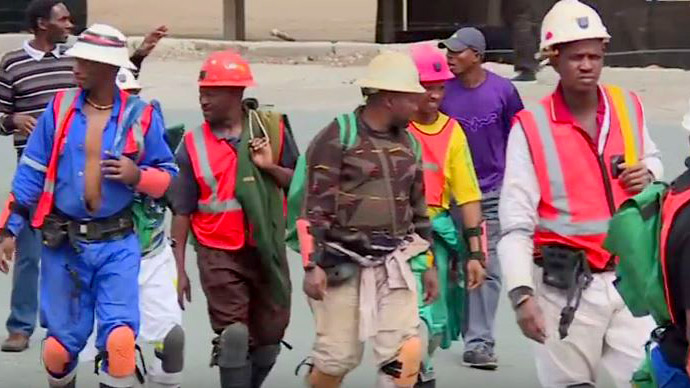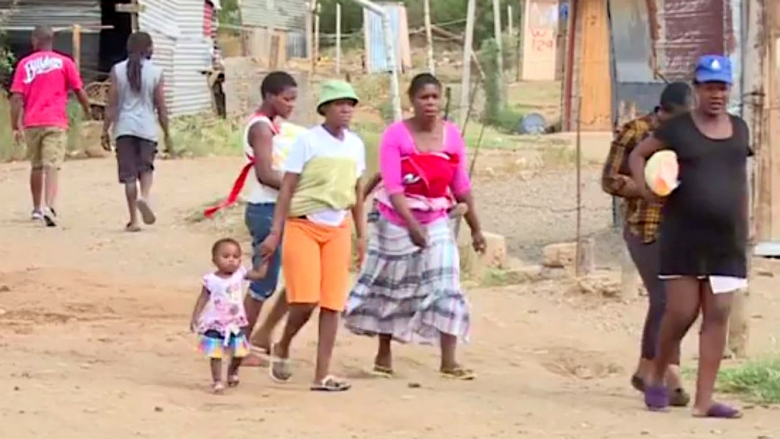The first time Godfrey Tolang, a mineworker in South Africa, was infected with tuberculosis (TB) was December 2010. He started to feel unwell and decided to go home to Lesotho. He says the mine’s fine dust and extreme heat combined with long workdays made working a challenge. There, he was diagnosed with TB, got treated and then returned to work with his medical record.
But even though Tolang successfully completed his treatment, he says he was infected with TB again in less than two years.
Tolang’s situation reflects some of the challenges facing mineworkers that the Southern Africa TB in the Mining Sector Initiative is trying to tackle. This regional initiative, which began in 2010, is working to combat the TB epidemic in Southern Africa’s mining sector, a key driver of economic growth in the region, including in countries such as South Africa, Swaziland, Lesotho, and Mozambique.
As many recognize World TB Day, March 24, this initiative shows how an innovative and a more harmonized regional approach can result in more effective TB management in the mining sector. It's led to better tracking and monitoring of TB treatment, improved mineworkers’ living and working conditions and expanded and more access to occupational health and compensation services for ex-mineworkers. The initiative is one of the key efforts of the South Africa Knowledge Hub, a multi-sectoral collaboration between governments, civil society, research institutions and other development and private sector partners being supported by the World Bank Group and the Global Fund to Fight AIDS, Tuberculosis and Malaria.
‘Emergency’ Rates of TB
While TB is highly preventable and curable, it remains a major problem in the South African mining sector, heavily impacting mineworkers, ex-mineworkers, and peri-mining communities. In South Africa alone, TB rates in the mining workforce are estimated at 2,500-3,000 cases per 100,000 individuals, 10 times higher than the rate the World Health Organization classifies as an emergency. It's also 2.5 to 3 times the incidence rate in the general population. Working in close proximity, prolonged exposure to silica dust, poor living conditions, high HIV prevalence in mining communities, migration, and poverty all contribute to these TB rates. Mineworkers are also often on the move, as well as resource-constrained, making it harder for them to find health facilities and seek and stick to treatment.
Many mineworkers in South Africa are also like Tolang, coming from surrounding countries to work. There are about 500,000 mineworkers in South Africa, and around 2 million ex-mineworkers spread across South Africa and the neighboring labor-sending countries of Swaziland, Lesotho, and Mozambique. These ex-mineworkers can be particularly difficult to track and may continue to suffer from TB and affect their families and those living around them.
“The biggest challenge is that TB is not just in the mining, TB is in the peri-mining, TB is in the community,” says Dr. Tumi Legobye, group health risk manager for Harmony Gold Mines in South Africa. “And if it’s in the community, the only way to address TB in the community is for all stakeholders to put their hands together around TB, HIV and to address it”
That’s why the Southern Africa TB in the Mining Sector Initiative has focused on forging strategic partnerships and cooperation between multiple sectors and stakeholders as well as coordination across national borders. Its strategy centers around five elements: facilitating policy dialogue, public and private partnerships, developing and sharing knowledge, expanding access to health services, and designing innovative approaches to TB treatment.
Promising Results
So far, results have been promising. For example, a database of current and former mineworkers is helping to coordinate and implement a strategic regional TB response. As part of this, an extensive mapping exercise was conducted in 10 Southern African countries by TomTom, a global leader in geo-spatial mapping, to map locations and names of villages, routes used by mineworkers, and the nearest health facilities. Work has also started on a regional Health Management Information System, a common platform that integrates national databases, to ensure continuity of care for mobile populations.



